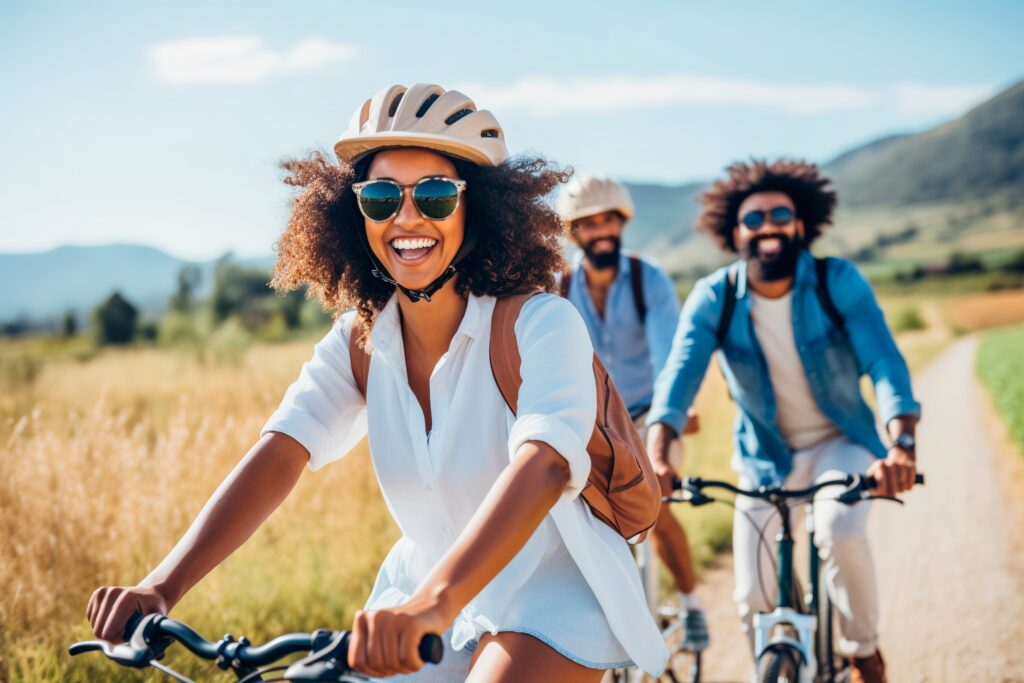
A cycling trip is always an extraordinary adventure, allowing you to survey sublime landscapes like never before. But if you don't want this first experience to turn into a fiasco, it's best to set off prepared. Here are 12 tips for your first cycling trip.
1. Choose a route that's not too demanding and prepare your itinerary well
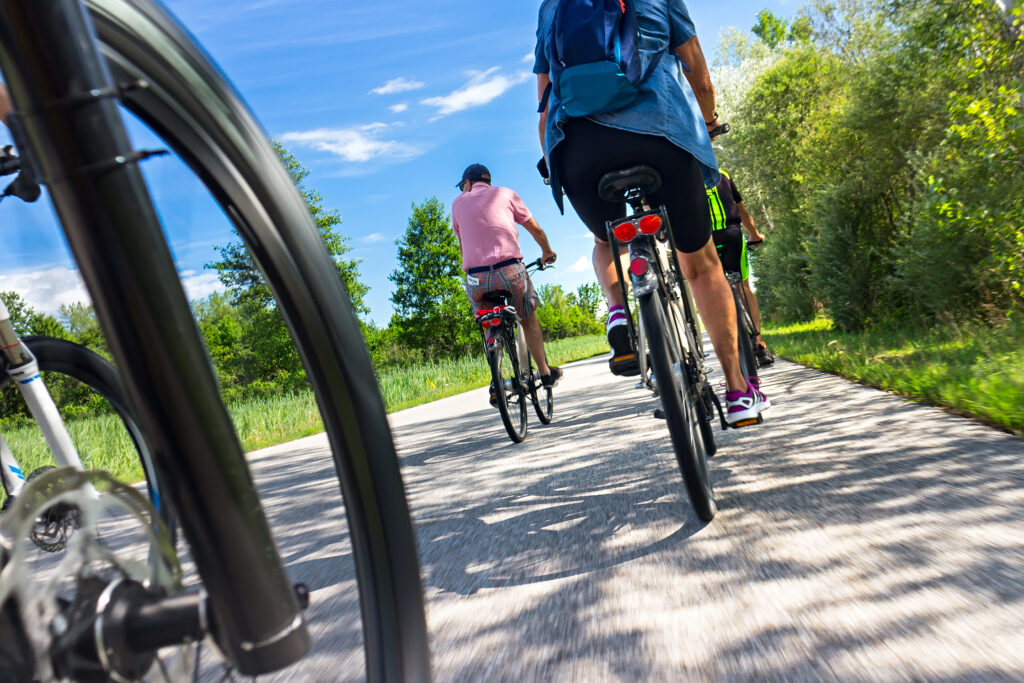
Even if you're a seasoned cyclist, remember that you've never cycled for several days in a row, as is the case on a first cycle tour. So, in addition to physical effort, you'll need stamina. Don't overestimate your abilities: the best advice for a first cycling trip is not to seek athletic performance.
Select your itinerary with this in mind: avoid mountainous routes with lots of difference in altitude. As for your destination, there are many excellent cycling trails in France and abroad.
2. Pay attention to the period
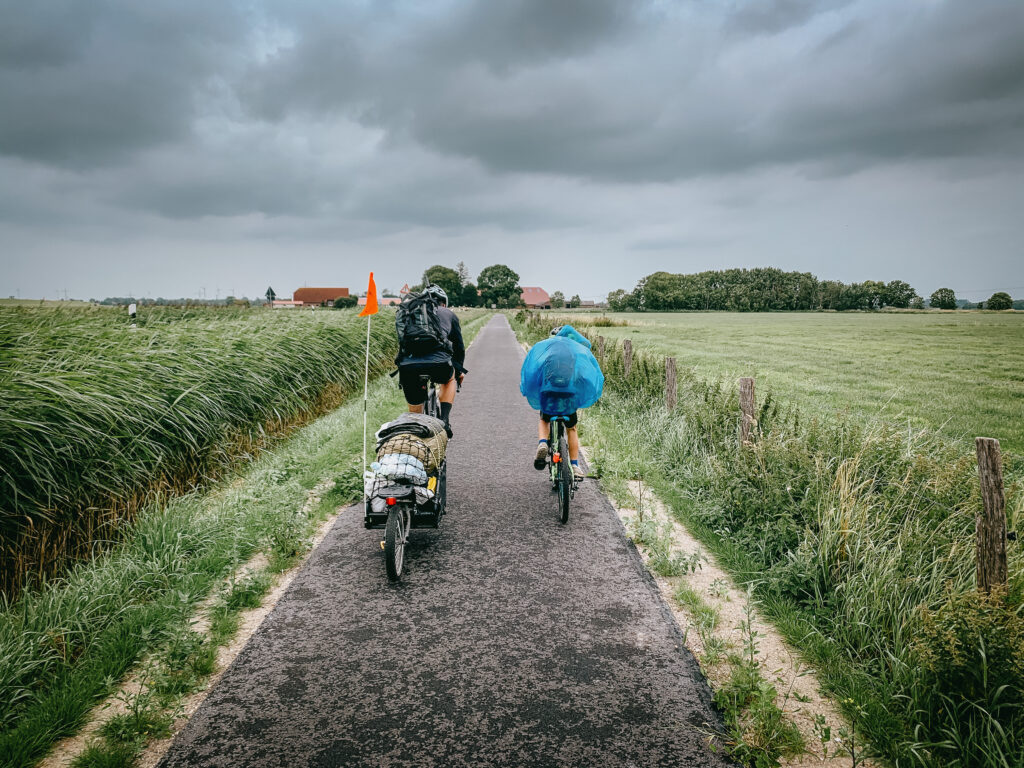
The weather will have a crucial impact on your cycling vacation. A heatwave, strong wind, driving rain or snowstorm could really spoil your trip. Don' t forget that you'll almost always be outdoors, putting in a lot of effort. With experience, you'll be less sensitive to the vagaries of the weather, but a good tip for a first cycling trip would be to avoid conditions that could discourage you from the outset. To prepare your cycling trip in France, you can consult sites such as Météo France. And don't forget that the period and the weather will have an impact on the type of equipment you'll need!
3. How many km per day should I cover on my first cycling trip?
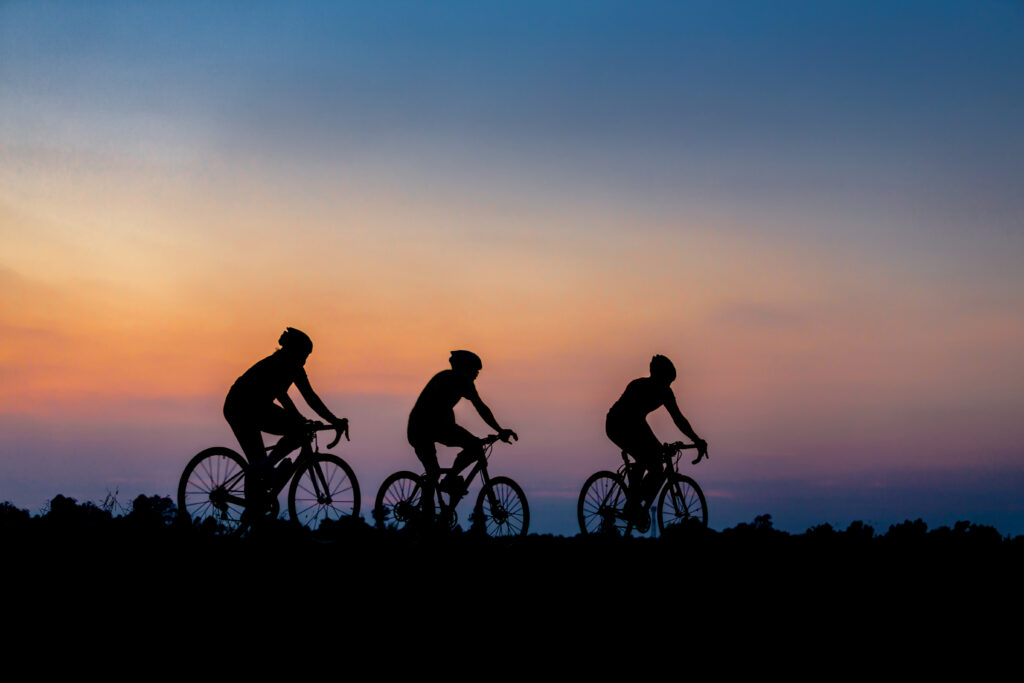
The distance you need to cover each day will depend not only on your level of cycling ability, but also on what you want to do on this trip. Ask yourself whether you want to have time to visit the various destinations you'll be stopping at, or whether cycling is your main objective. Ask yourself whether you need to take breaks, and if so, how often and for how long. Finally, bear in mind that you're likely to build up stamina as you ride, so you can gradually increase the daily distance covered.
A good indicator of the number of kilometers per day you should cover on your first cycling trip would be :
- 15 to 30 km per day if you're not very fit (i.e. 2 to 4 h on flat terrain)
- 30 to 40 km per day for moderate cyclists
- 40 to 70 km per day for experienced cyclists
- 70 to 90 km for a sporty trip
4. Select the right bike
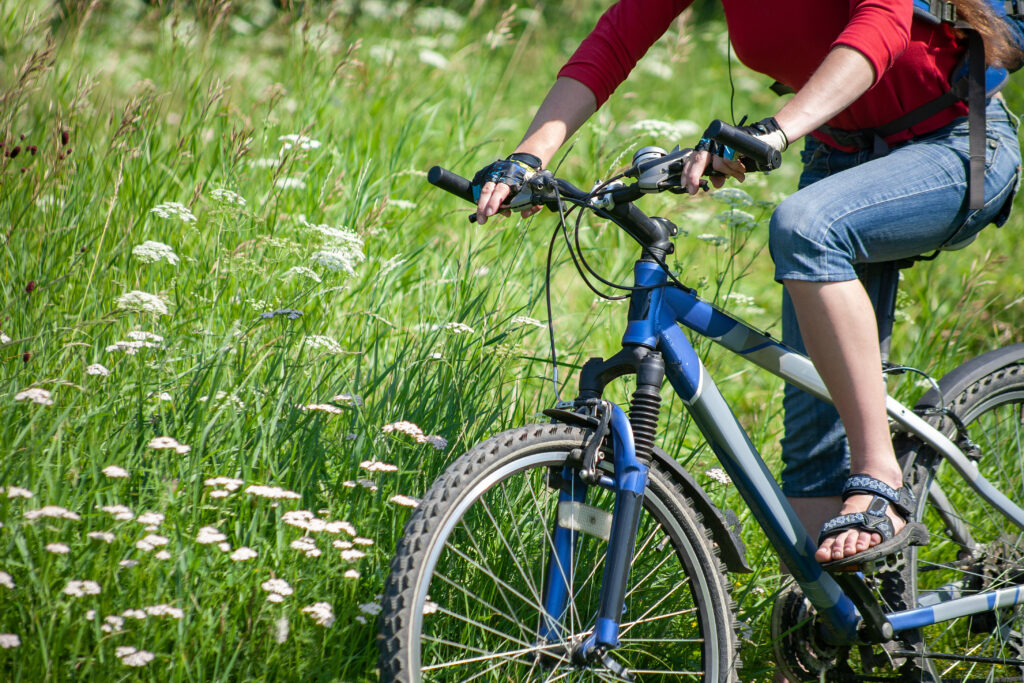
Of course, the most important piece of advice for your first cycling trip will be choosing the right bike.
When choosing your bike, you'll need to look for a few essential qualities:
- A sturdy bike, since you'll be loading it up and covering long distances with it,
- A comfortable saddle, since you'll be spending long hours sitting on it,
- A serviced bike, to minimize the risk of mechanical problems.
Remember also to choose a bike suited to your itinerary, depending on whether your route is on gravel and dirt, in which case you'll choose a mountain bike, or on roads, in which case you'll opt for a road bike. If your itinerary is more varied, choose a more versatile bike, such as a mountain bike, or a gravel bike, which combines the qualities of a mountain bike and a road bike.
5. Choose the right equipment
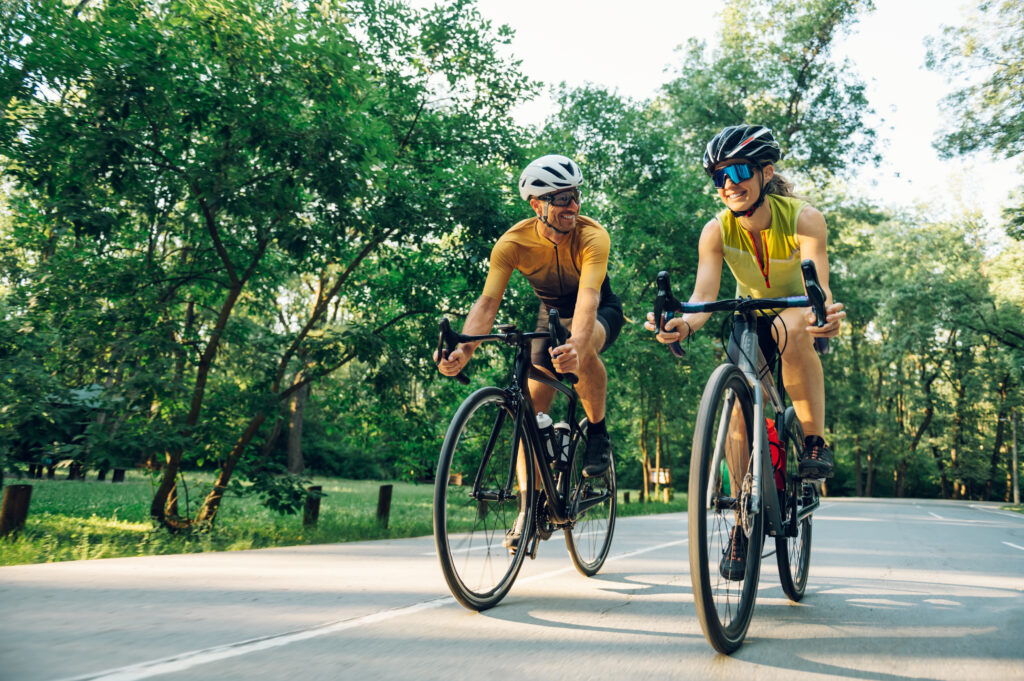
Choosing a bike isn't enough: you also need to select the right equipment, and this is an essential piece of advice for a first bike trip! Remember to select the lightest possible equipment, as weight will soon become your worst enemy.
Here are a few items of equipment to consider:
- Waterproof panniers or a trailer to transport your gear
- Bicycle repair kit (wrench, patch, inner tube, pump, etc.)
- Chain grease
- Helmet
- Anti-theft device
- Sunglasses
- Sun cream
- Windproof jacket
- Water bottles
6. Take only the bare essentials
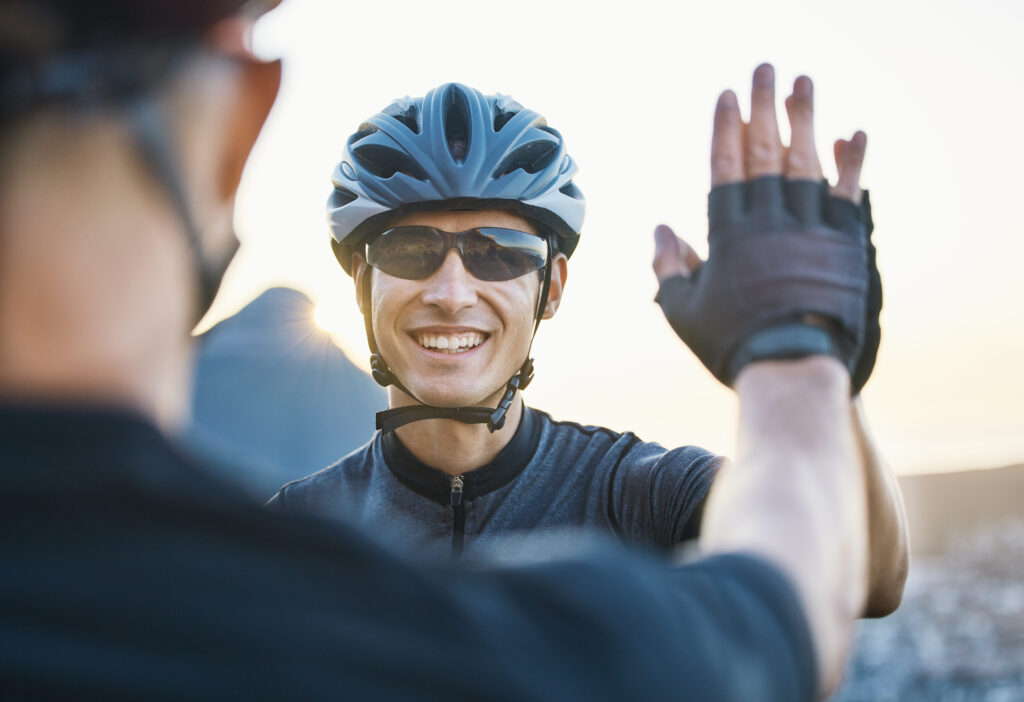
As we said earlier, on your first bike trip, weight will really be your worst enemy. First of all, select the lightest possible equipment: these days, manufacturers compete inventively to offer sturdy yet lightweight equipment. But above all, remember to lighten your load as much as possible.
For a first trip by bike, choosing panniers will already be wiser than a trailer. Of course, trailers offer more space and are particularly practical, since you can easily access your belongings, but they are also much heavier and less maneuverable. Panniers are therefore a better choice for the inexperienced cyclist, as they are lighter, less cumbersome, and should suffice for your personal belongings, since you'll need to travel light. Forget the various sets, superfluous accessories and other bulky photo equipment: here, every gram counts.
Another solution to consider is luggage transport. A team takes charge of your luggage every morning at your accommodation, and has it delivered by the evening to your next stop. Many professionals offer this service, so you can pedal with complete peace of mind.
7. Organize your accommodation in advance
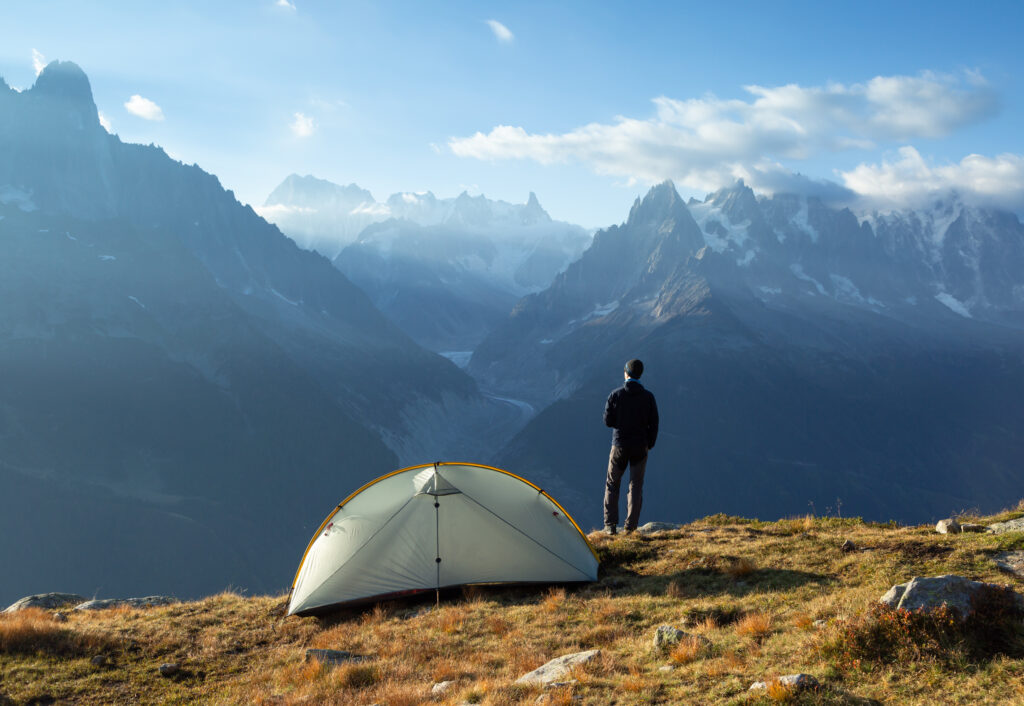
The first question to ask yourself is what type of accommodation you want: is it more of a bivouac, or hotels, gîtes and youth hostels? Not only will your experience depend on your answer, but so will your budget.
If you opt for a bivouac, you'll already need to check that it's permitted in your destination. Some cycling destinations, such as Slovenia, simply forbid wild camping. You'll also need to equip yourself more, and therefore carry a heavier load... Don't forget to plan where you'll be sleeping, or at least to scout out the area in advance by doing some research.
If you choose to stay in a hotel, it's best to book in advance. You'll take a load off your shoulders, and pedal much more peacefully, if you know where you'll be sleeping in the evening. And after a long day's effort, you'll be able to get some rest, rather than wasting time and perhaps running into problems finding accommodation. To maintain flexibility and leave room for spontaneity, it's a good idea to select accommodations that offer last-minute cancellations. Finally, pay attention to hotel labels : the Accueil Vélo label indicates that the establishment has facilities and services for cyclists.
8. Always have something to eat

It may seem paradoxical, after advising you to travel light, but this is one piece of advice for a first cycling trip that you'll thank us for giving you: always have something to eat. You're going to be putting in a great deal of effort over a long period of time, so logically you're going to be hungry, very hungry, and very often!
There's no need to plan too far ahead, precisely so as not to add too much weight, but do visit grocery stores regularly. Beware: they can be rare in the countryside, and close very early. Stock up on quick, satiating snacks: cereal bars, cookies, fruit, bread..
9. Learn how to find water
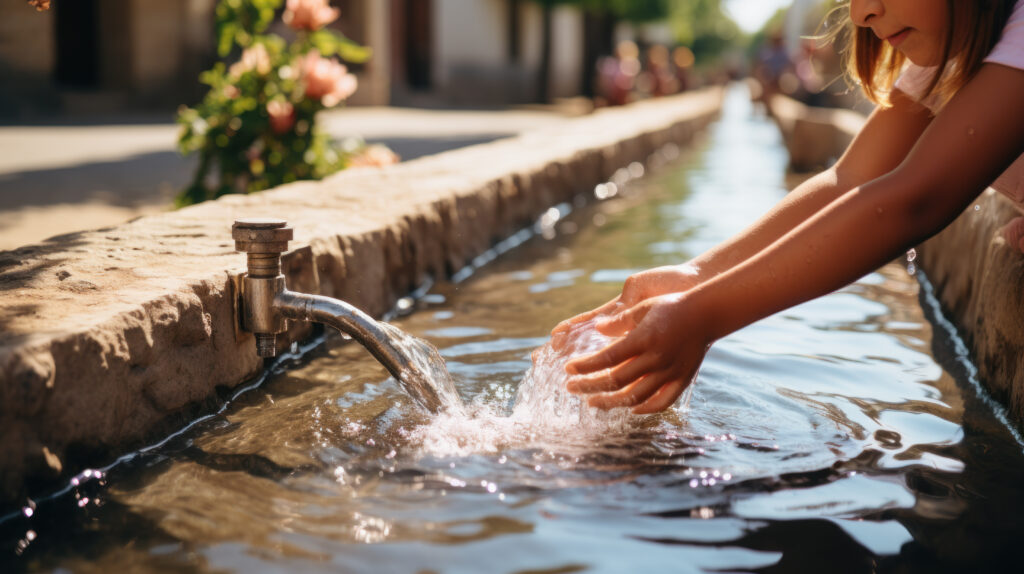
Sure, you'll need food, but you'll need water even more! Lack of water is one of the biggest problems you'll encounter on your bike. So make sure you're equipped with water bottles, and look out for water points. In most towns, the water in fountains is drinkable, and you'll be told otherwise. In the countryside, this quest for water may prove more difficult. That's why we've come up with a little tip that's well known to cyclists: look out for cemeteries! They almost always have a freely accessible water point, and you'll find cemeteries in even the smallest villages.
10. Learn the basics of bike repair and maintenance
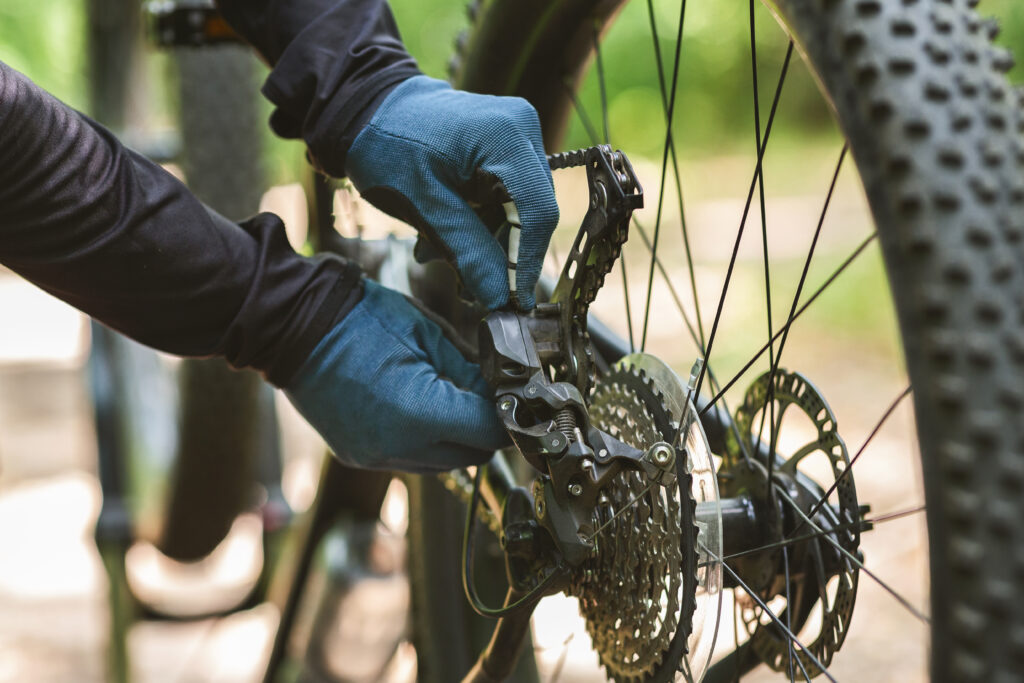
Before you set off, consider watching a few tutorials to learn the basics of bike maintenance and repair. Small mechanical problems can get in the way, and they'll only turn into big problems if you don't know how to react.
Find out more about :
- Replacing a tire or inner tube
- Greasing your chain
- Putting on a patch
- Changing a link
- Adjusting derailleurs and brakes
- Inflate tires to correct pressure
- Check essential parts for wear
- Master the various tools
Don't forget, however, that bike repair shops are commonplace in France, and you shouldn't have too much trouble finding one in an emergency.
11. Download the right applications
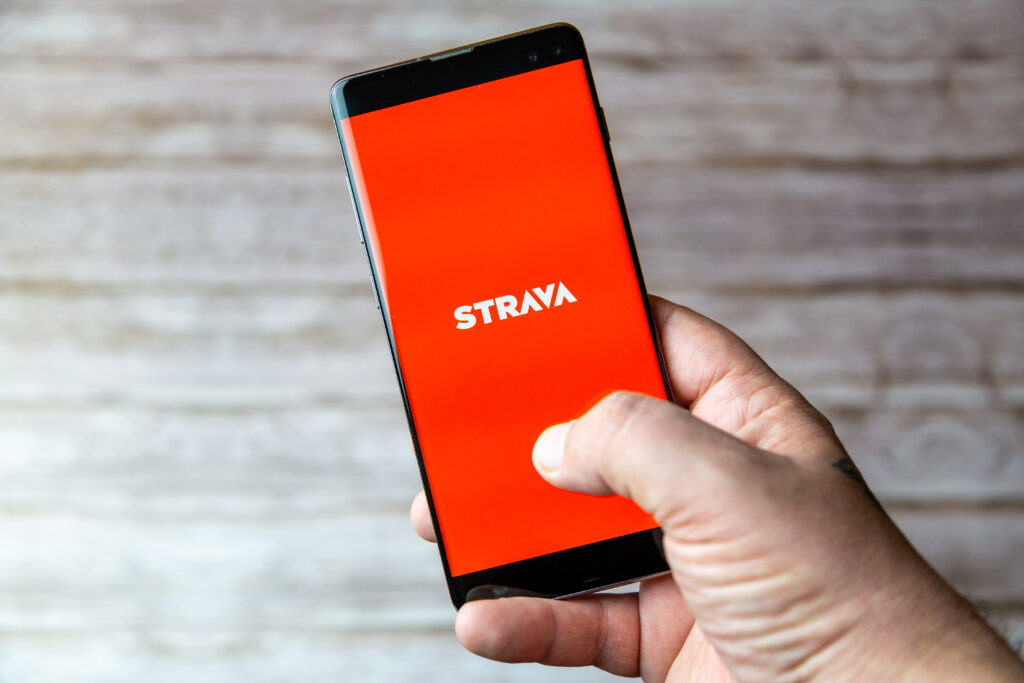
Apps can be particularly useful allies on your cycling vacation, and all the more practical because they don't represent any extra weight on your journey.
For example, there are dozens of useful applications for planning your cycling itinerary, such as BikeMap, Maps.me, Komoot and Strava. Other applications , such as TrainingPeaks or MyWindSocks, allow you to better monitor your performance, but we advise you not to focus on performance for a first trip. You might also consider WarmShowers, an application that lets you exchange services with other cyclists, enabling you to sleep at the homes of other bike enthusiasts on your route.
12. Organize your return
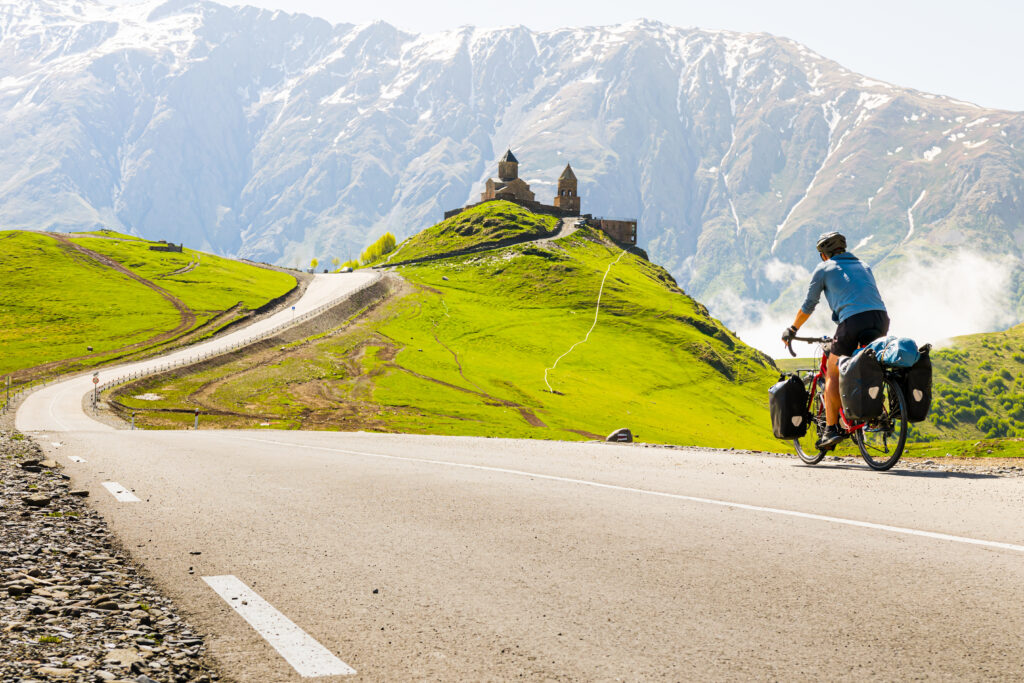
These tips for a first cycling trip would not be complete without mentioning the return journey. While this will not be a complication on a loop itinerary, or in the case of a round trip, it will not be the case on a point A to point B itinerary. So don't leave planning to the last minute. Don't forget to look into transport options that accept bicycles. Night trains in some countries accept them. For daytime trains, check whether the line you want to take allows them, whether you'll have to pay a supplement, and whether you'll have to dismantle your bike and put it in a bag. Similarly, some bus companies accept bicycles, usually at extra cost.


